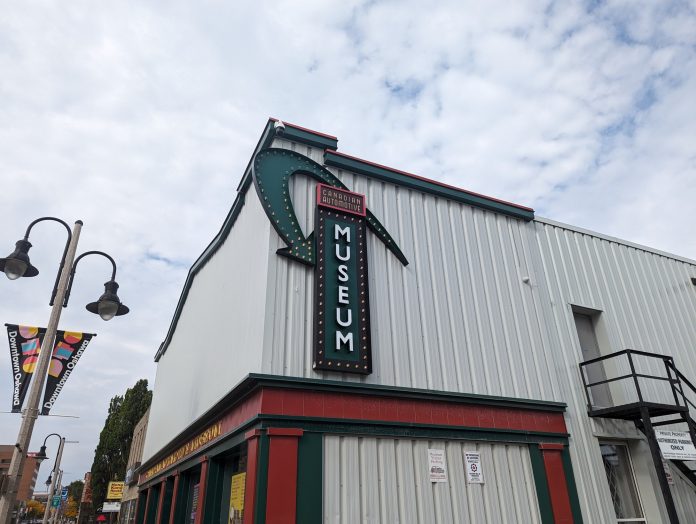The automotive industry plays an integral role in many people’s daily lives, manifesting in forms such as buses, cars, and even watercraft. All of that stems from small industrial-based communities like Oshawa.
Since the establishment of its first major motor company in 1907, Oshawa has been recognized as an automotive hub for more than a century, with General Motors playing a pivotal role in shaping the city’s job and vehicle market.
One piece of the city’s cherished past, the building that now houses the Canadian Automotive Museum, has been a part of the industry since it was constructed 102 years ago.
After ceasing operations as a dealership in 1931, the building had various uses, including serving as City Relief during the Great Depression, before being leased to the Anglo-Canadian Drugs Company until 1960.
The museum took over the 99 Simcoe St. S. property in 1961 and opened in 1963 with a brand new storefront, which included an imposing new sign, according to Oshawa City Archives, and the museum.
With that, the museum is celebrating its 60th anniversary this year, marking a significant presence in the same location throughout its history.
The museum’s visitor services manager, Emily Finbow, for the museum says it is “really important that we have a place like this in Oshawa to celebrate what makes the city great.”
The museum houses various automobiles from all over the world and plenty of Canadian automobiles, including the Oshawa-established Mclaughlin-Buick brand.
One standout Mclaughlin-Buick is the 1908 Model F, which had to be driven and loaded onto a trailer to get to the Concours D’elegance show in Cobble Beach.
The museum’s executive director, Alex Gates, described this as “worrisome.” He revealed that the car had not been driven on public roads in roughly 25 years. “With the cars, you never know if it’s going to start again, which is part of the fun of driving and seeing these kind of brass-era cars,” he said.
The Model F not only stood out at the Concours D’elegance show but also earned accolades, placing second in its category and being honoured with the Bruce Grey Simcoe Award, which recognizes excellence in automotive restoration and preservation.
Gates noted the museum’s importance in highlighting the enduring presence of the automotive industry in Oshawa.
He said, “It shows the longevity of the auto sector here in Oshawa,” emphasizing that the city’s automotive history had already reached a milestone of six decades by the time the museum first opened its doors, effectively doubling the historical span they share today.
Finbow also mentioned their initiatives to inspire the next generation, emphasizing STEM—Science, Technology, Engineering, and Math—which is a key educational focus in the Durham Region, particularly at Ontario Tech.
In terms of the future, the museum is using the space in the summer to host workshops for kids discussing electric vehicles and how automotive engineering works. Although the program is still new, they hope to inspire more people to pursue the cause of cleaner transportation.
Recently, the museum featured an exhibit by the retro car dealership Oblivion, which loaned their 1991 Honda Civic Hatch built in Alliston, Ontario.
Considering Oblivion’s impact on Canadian car culture, Finbow said, “They’ve been a really big museum supporter for a long time, so working with them is always a joy.”
The museum is always looking to expand on its collection and is currently renovating the building to allow for more of Oshawa’s legendary automotive history to be preserved and showcased.
The museum continually seeks to enhance its collection and is
undertaking renovations to better preserve and exhibit Oshawa’s storied
automotive heritage.




